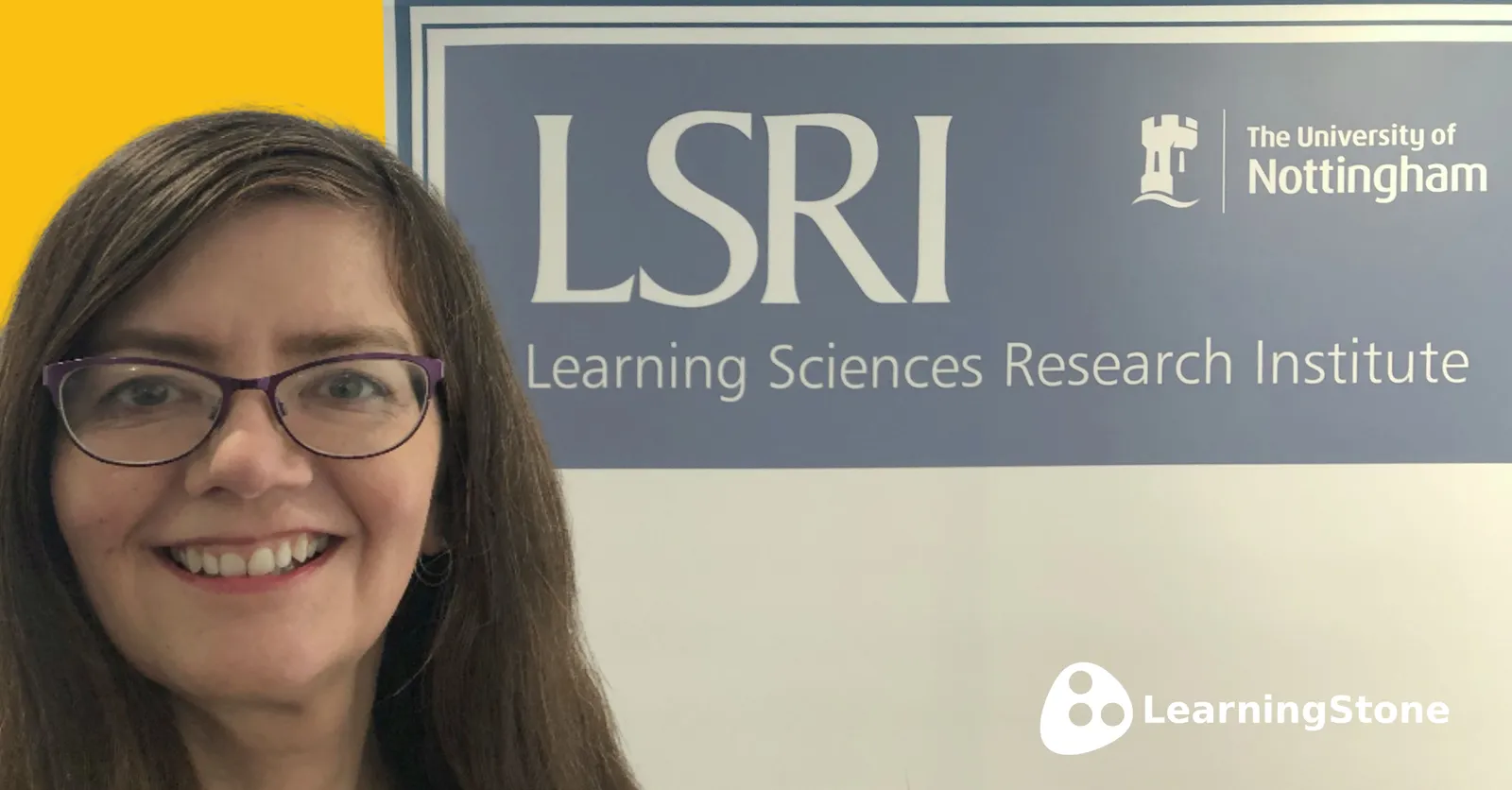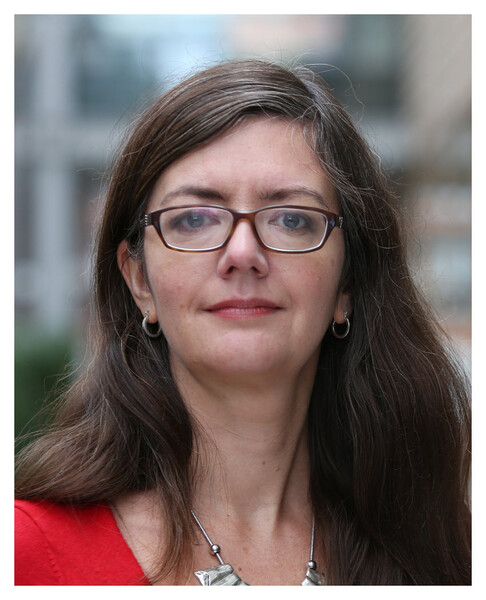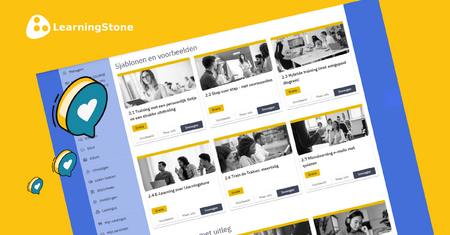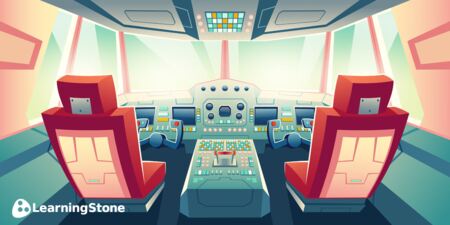
Professor Shaaron Ainsworth

What are the cognitive, emotional, and social processes involved in learning? And how can we use that knowledge to innovate educational experiences? These two questions are at the heart of Learning Sciences, a field that Professor Shaaron Ainsworth of the University of Nottingham has worked in for 32 years. With a background in Psychology and Artificial Intelligence, she finds learning fundamentally fascinating. As Professor Ainsworth is part of a team that’s using LearningStone for a research project, we dropped by for a chat.

Professor Shaaron Ainsworth

“I’m particularly interested in the type of learning that’s unique to human beings,” she says. “Cave paintings on the wall were the first steps towards today’s augmented reality. We have created external environments to help people think for over 50,000 years. What also makes us stand out from other species is intersubjectivity: we’re able to understand another person’s perspective and use it for teaching and learning.”
“Learning has become embodied in technologies that allow us to use our senses”
Over the years, Professor Ainsworth has observed a change in the way we view learning with technology. “We used to consider this type of learning as something we do with text, sitting statically in front of our computers,” she explains. “Now, we see it as a much more extended phenomenon. It has become embodied in technologies that allow us to use our senses.”
At the same time, Professor Ainsworth believes we still need to find ways to revolutionize education. “Why do we do so much teaching and learning and still move to a formal paper assessment? Why not find some ways to look at how people perform during teaching and learning? Maybe the way you play the game is all we need to know about your understanding.”
The danger of technology-based learning is that we’ll take it for granted. “We should be funding research into the topic,” Professor Ainsworth says. “It’s the responsibility of parents, social scientists, and educators to not leave technology development in the hands of tech companies. We should stop choosing technologies that look glossy and start choosing those that provide high-quality learning opportunities for people.”
“We’ve created a community of learners rather than an individualized learning experience”

One of Professor Ainsworth’s current research projects, Counting Collections, attempts to even out educational disadvantage by helping more young children develop essential understanding of and confidence in mathematics—which is fundamental to their later success at school and in life. Funded through the Education Endowment Foundation, this comprehensive study involves a large-scale randomized trial of primary school pupils and their teachers. Professor Ainsworth’s team at the University of Nottingham (led by Dr Catherine Gripton) uses LearningStone for the professional development of the teachers, which is needed to support this evidenced-based approach.
Counting Collections is a hands-on early mathematics approach to develop children’s number sense (their understanding of number and quantity). Children work in pairs to choose, strategize, count, and record how many items there are in collections. They do this in weekly Counting Collections sessions and during play using a counting library of different sized boxes of inviting objects to count. To adults, this might seem very easy, but by Counting Collections children can learn about counting, subitizing, comparing numbers, and the composition of numbers. The professional development helps teachers understand the underpinning theories, as well as how best to put them into practice.
“We wanted a platform that would make it really simple for teachers to join,” Professor Ainsworth says. As it turned out, LearningStone offers a user-friendly experience, as well as opportunities for the researchers to set up the right blended learning environment. “After a face-to-face learning session, teachers can find the follow-up in LearningStone. They can also record how they use the approach in their classrooms and upload their photos or videos to LearningStone. Here, they exchange thoughts and ask each other questions. That’s exactly what we wanted—to create a community of learners rather than an individualized learning experience.”
There’s also a practical element to using a blended learning environment. Professor Ainsworth explains, “It’s much more efficient for teachers, who are busy and located all over the country, to attend a half-day training session online. With LearningStone, we’ve developed and delivered several synchronous and asynchronous learning experiences.”
LearningStone has also proven to be useful for behind-the-scenes purposes. “We capture research data using the forms within LearningStone,” professor Ainsworth says. “Since teachers record their activities in LearningStone, we can look at fidelity of implementation and check whether they follow through on their intentions.”
“It’s what humans choose to do with technologies that makes the difference”
The first iteration of Counting Collections will end this summer. Depending on the results, research funding could continue. But if the findings are clear, the researchers might look to take this product to market in a low-cost, break-even way. According to professor Ainsworth, “that might allow a whole bunch of primary school teachers to engage with this approach.”
A learning scientist at heart, she’s always on the lookout for more innovative ways to use the means we’ve got. “I’m not a technological determinist,” she says. “I definitely think it’s what humans choose to do with technologies that makes the difference. AI allows us to build systems that care about the learner, but I’m not sure that’s what people are focused on right now. At the same time, all sorts of things have been present in research laboratories for 20 years. It’s just complex to incorporate them into the mainstream of educational practice. But I believe the potential for transformation is there, if we choose to be braver about how we use technology.”

Interested in Professor’s Ainsworth’s project? Read more about the research trial here.

Today we have launched the LearningStone content store. For now it’s a collection of free examples of course timelines which can be useful for you when you create your own course timelines on…

How to have employees use their knowledge and experience to contribute significantly to the overarching organizational goal? And how to make sure they thoroughly understand this goal, so they can act…

Have you prepared your LearningStone workspace and are you ready for some Online Blended Training? Don't forget to practice your presentations and workshops on Zoom, Teams, Whereby, Big Blue Button